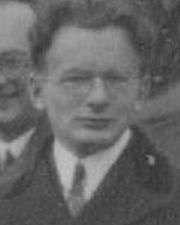Heinrich Heesch

Heinrich Heesch (June 25, 1906 – July 26, 1995) was a German mathematician. He was born in Kiel and died in Hanover.
In Göttingen he worked on Group theory. In 1933 Heesch witnessed the National Socialist purges among the university staff. Not willing to become member of the National Socialist organization of university teachers as required, he resigned from his university position in 1935 and worked privately at his parent's home in Kiel until 1948.
During this time he did research on tilings. In 1955 Heesch began teaching at University of Hanover and worked on graph theory. In this period Heesch did pioneer work in developing methods for a computer-aided proof of the then unproved Four color theorem. In particular, he was the first to investigate the notion of "discharging", which turned out to be a fundamental ingredient of the eventual computer-aided proof by Kenneth Appel and Wolfgang Haken.
Between 1967 and 1971 Heesch came to the United States several times, where bigger and faster computers were available and where he worked with Haken and Y. Shimamoto. During the crucial phase of his project, the German national research fund DFG cancelled financial support. After the 1977 success of Appel and Haken, Heesch worked on refining and shortening their proof, even after his retirement.
Works
- Heinrich Heesch, Untersuchungen zum Vierfarbenproblem, Bibliographisches Institut, Mannheim 1969
- Bigalke, Hans-Günther (Hrsg.). Heinrich Heesch, Gesammelte Abhandlungen, Bad Salzdetfurth 1986.
Literature on Heinrich Heesch's work
- Bigalke, Hans-Günther. Heinrich Heesch, Kristallgeometrie, Parkettierungen, Vierfarbenforschung, Basel 1988.
See also
External links
- http://www.ifg.uni-kiel.de/eckenundkanten/hk-02_de.html Biography (in German)
|